A unique board game developed by ICSC challenged players to showcase their retail merchandising talent at ICSC LAS VEGAS. Marketplaces Mastermind prompted players to choose tenants for either a 10-shop lifestyle center with a pedestrian promenade or a 10-shop grocery-anchored community center.
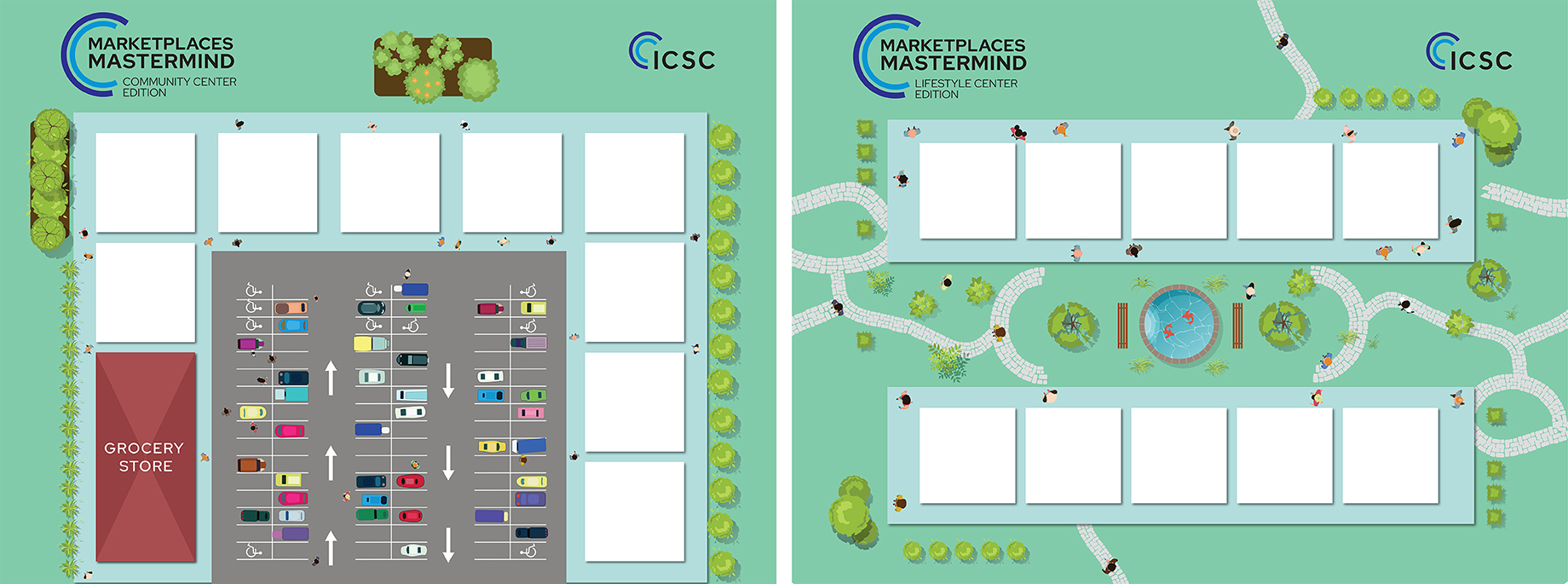
Each player drew a card representing anonymized trade area demographics extracted from the ICSC MARKETPLACES IQ platform and based their merchandising plans on those communities. Game pieces representing 37 uses provided players with a tenant pool from services to food-and-beverage to traditional retailers. Players also could write in their own tenants.

The game attracted the attention of professionals from a variety of disciplines, from property managers to brokers and from developers to economic development pros like city of Reno, Nevada, revitalization manager Bryan McArdle, pictured above.

After completing their plans, players posted their tenant mixes on a common wall so others could discuss and draw inspiration.
The variety of tenant mixes that players created highlighted the flexibility of marketplaces and their power to serve the people as they shop, dine, work, play and gather in each specific community.
Consider the following two differing strategies that players chose to serve the Top Tier demographic, described as “the wealthiest market segment with the purchasing power to indulge any choice.” Its median age was 46.2 years, and its household income topped $200,000.
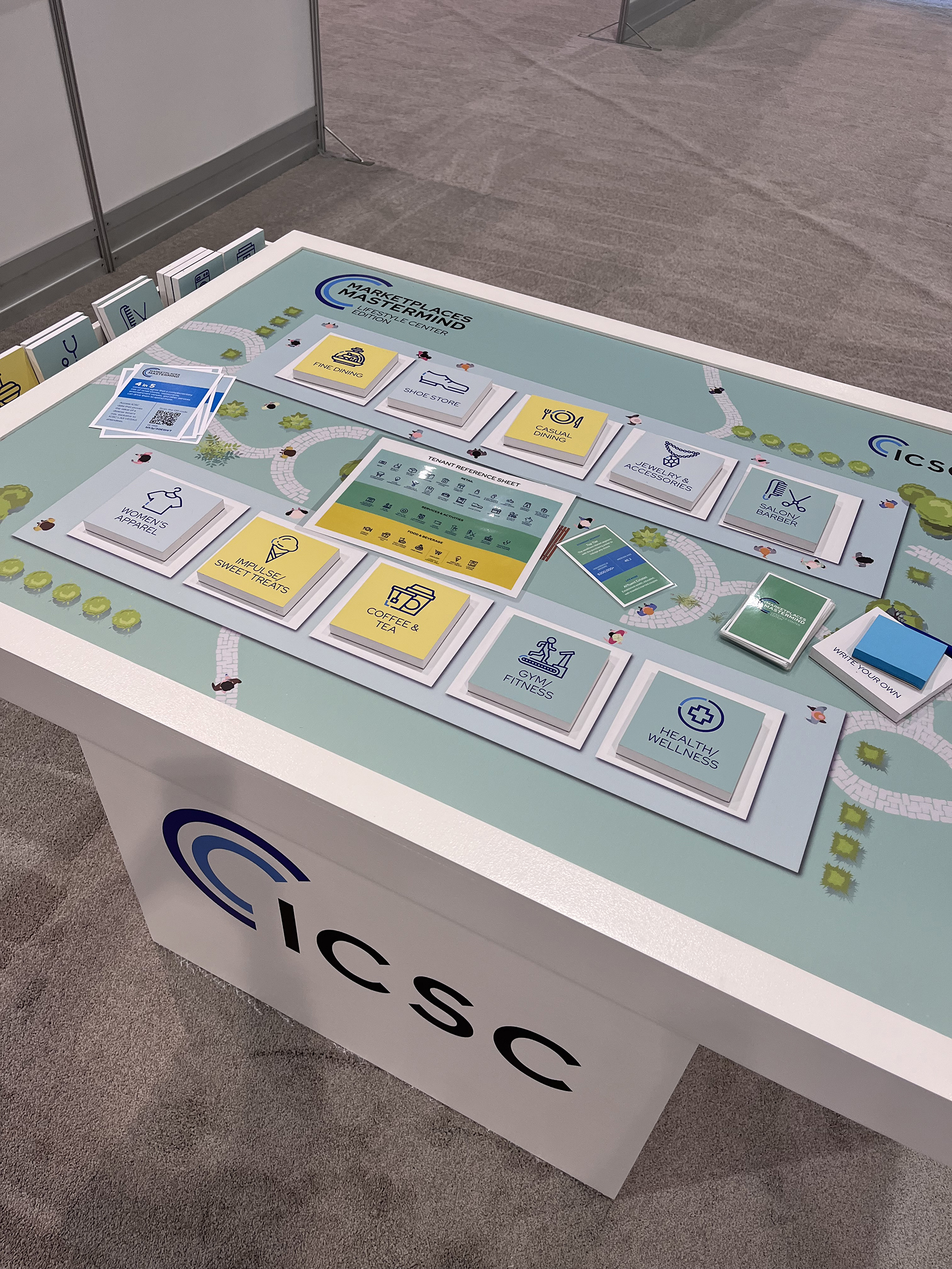
This player went with high-price and fashion tenants: fine dining, a shoe store, women’s apparel and jewelry and accessories. The player did add some pricing diversity with a casual dining option, as well.
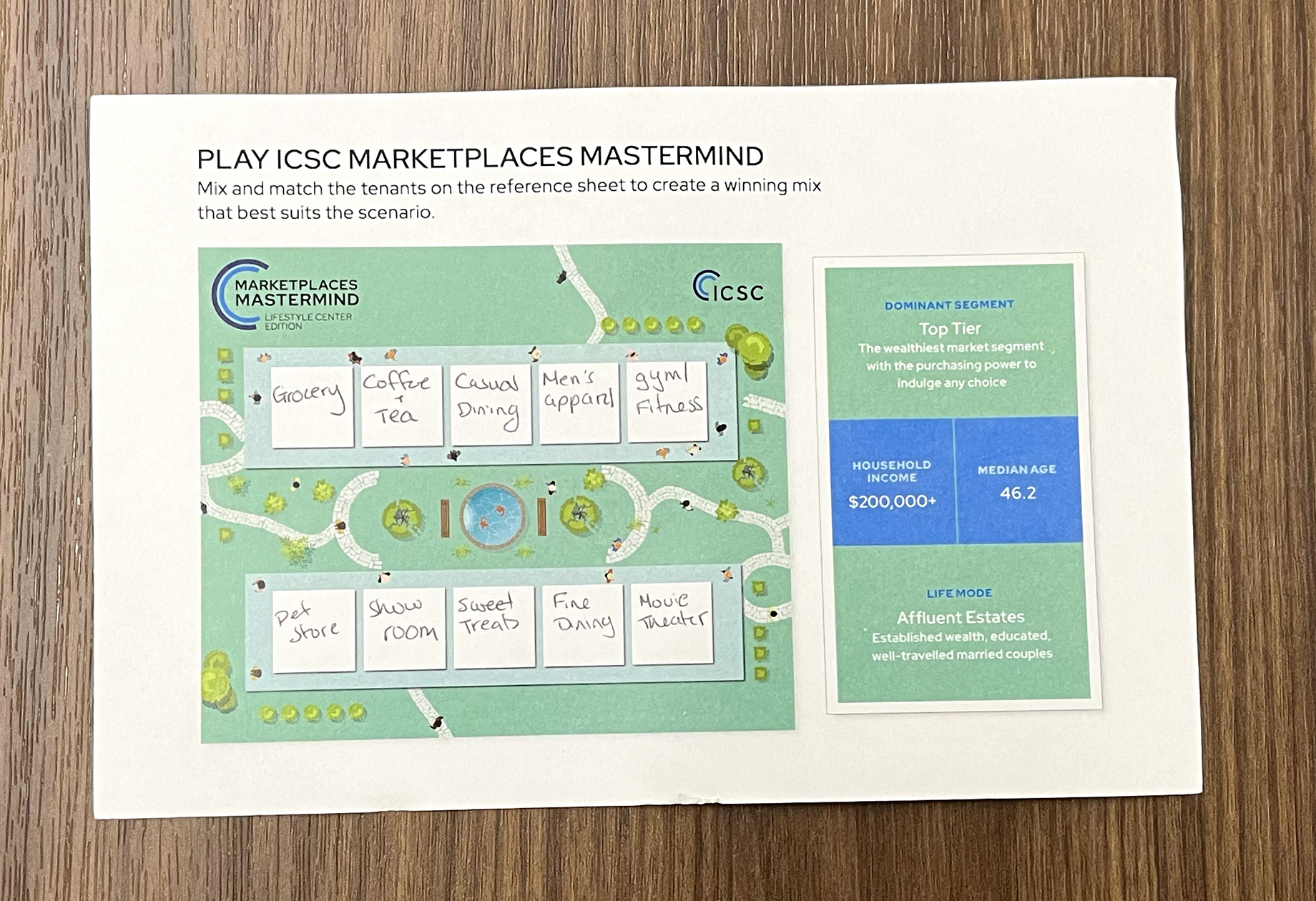
For the same demographic and also for a lifestyle center, another player added a grocery store — Erewhon, perhaps? — as well as men’s apparel, a showroom, a pet store and a movie theater.
Diversity in approach also was evident in the following pair of plans to serve a 35.7 year-old, single, well-educated professional living in an urban market and making $165,465 at a business, finance, legal, computer or entertainment job.
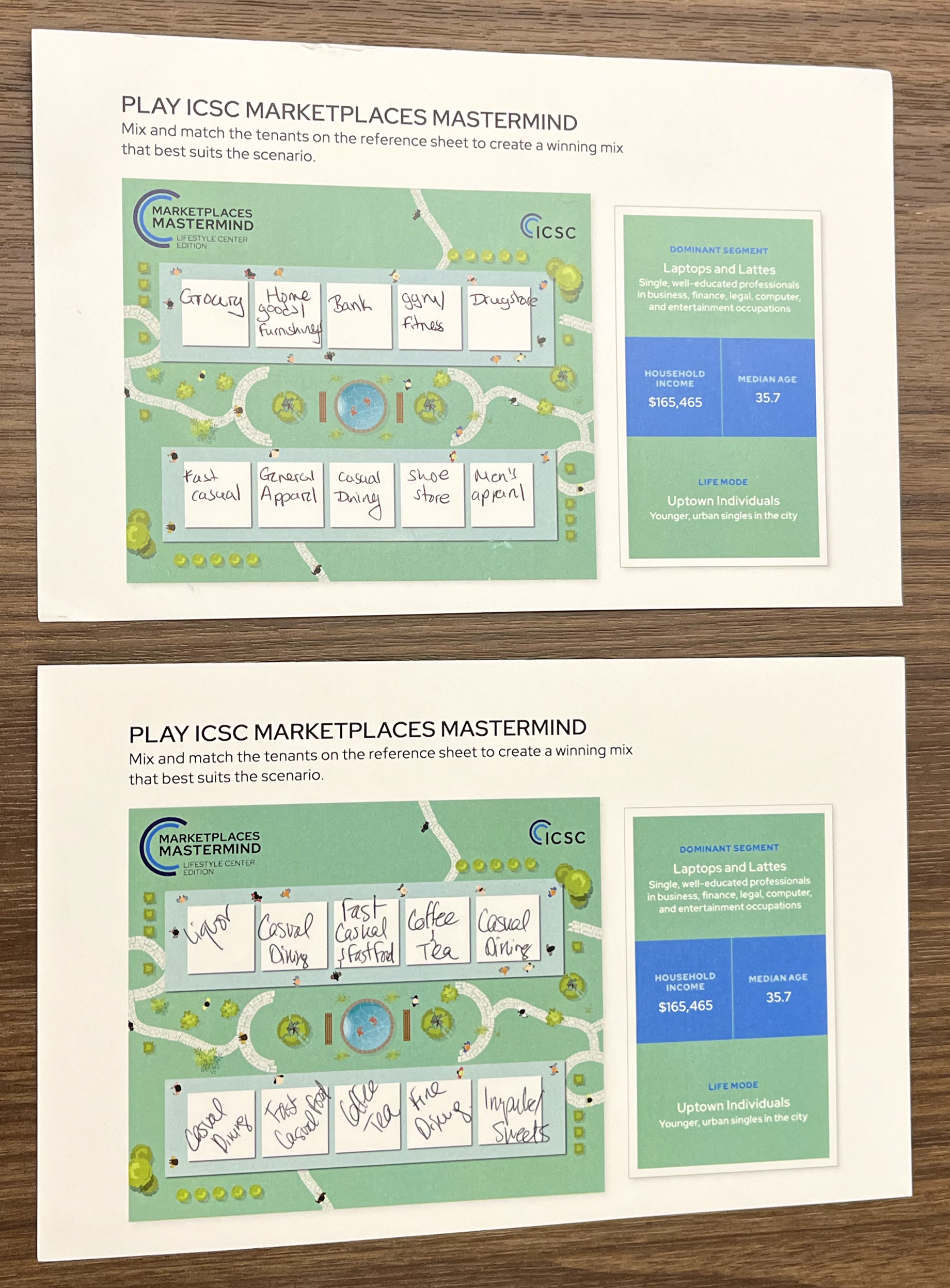
The first focused on daily needs, and the second emphasized eating out, including three casual dining tenants and two separate coffee-and-tea spots.
What We Learned
Players anticipated different needs based on the geographies they had in mind. For example, players from warm-weather regions talked more about outdoor seating for restaurants. And some players added liquor stores next to grocery stores because both products can’t be sold under the same roof in their states, as below.

Apparel played a significant role for those establishing upscale centers, as almost all lifestyle center plans included at least one men’s apparel, women’s apparel or general apparel option. But players offered their consumers more than just shopping. No player leased a center exclusively to traditional retail tenants. And service tenants played a crucial role, as most players included at least one, if not two, of them.

It’s interesting to note that the most-frequent write-in was cannabis dispensary. And among the least-used tenant types were big-box store and game/hobby store. Other takeaways:
Restaurants: Food-and-beverage tenant uses were the most popular. Most players, in fact, began by placing fast casual/fast food and coffee-and-tea tenants before even looking at other uses:
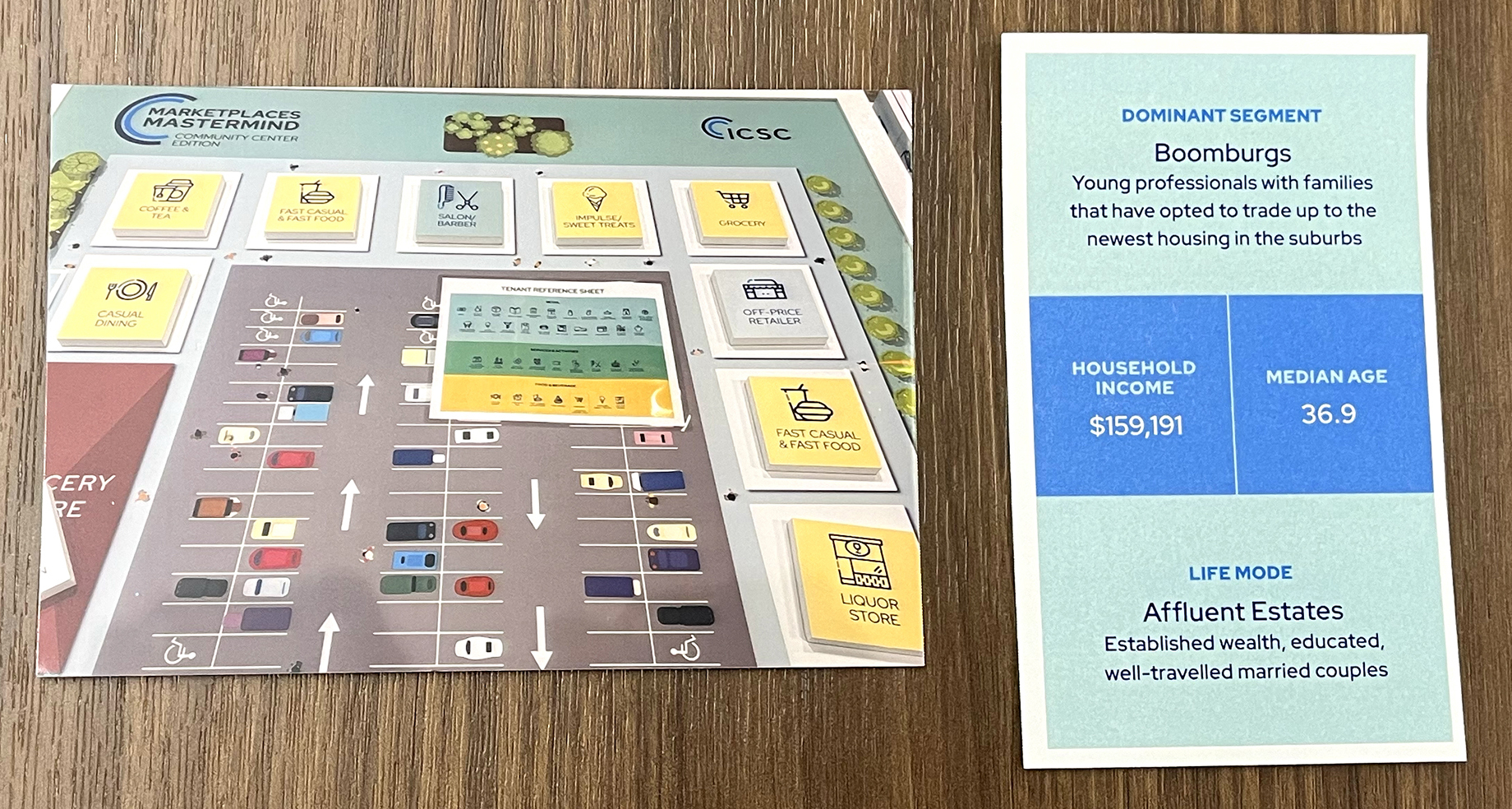
Grocery Stores: A grocery store was “built in” to the grocery-anchored center edition of the game, but grocers also made it onto nearly every lifestyle center plan, as below, a reminder that groceries come in all sizes and price points these days.
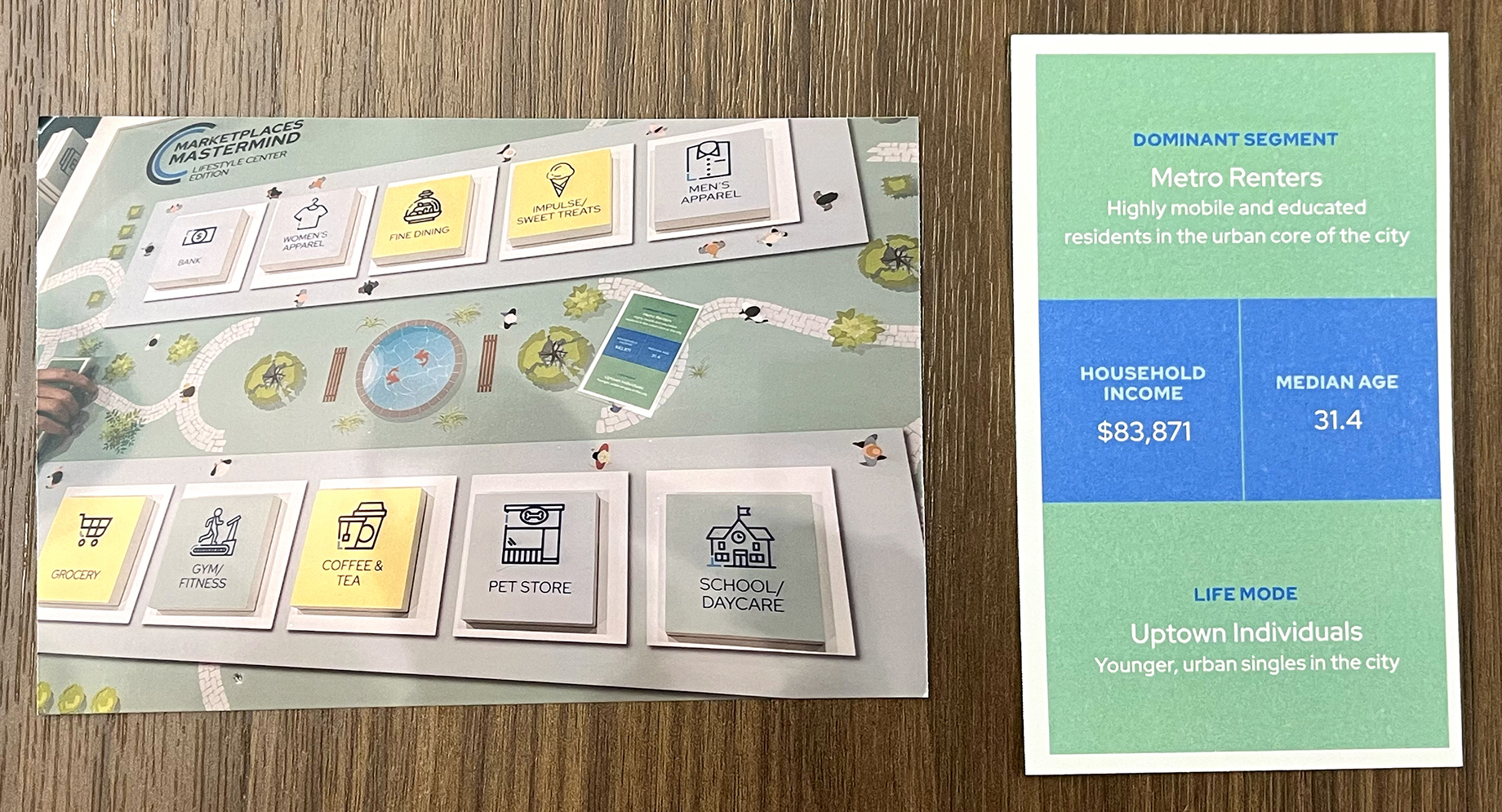
MORE FROM C+CT: Grocery Stores’ Enduring Appeal to Shoppers, Investors and Developers.
Schools: While adding school/day care to the board pictured below, a Florida broker mentioned that such operators are expanding in his market.
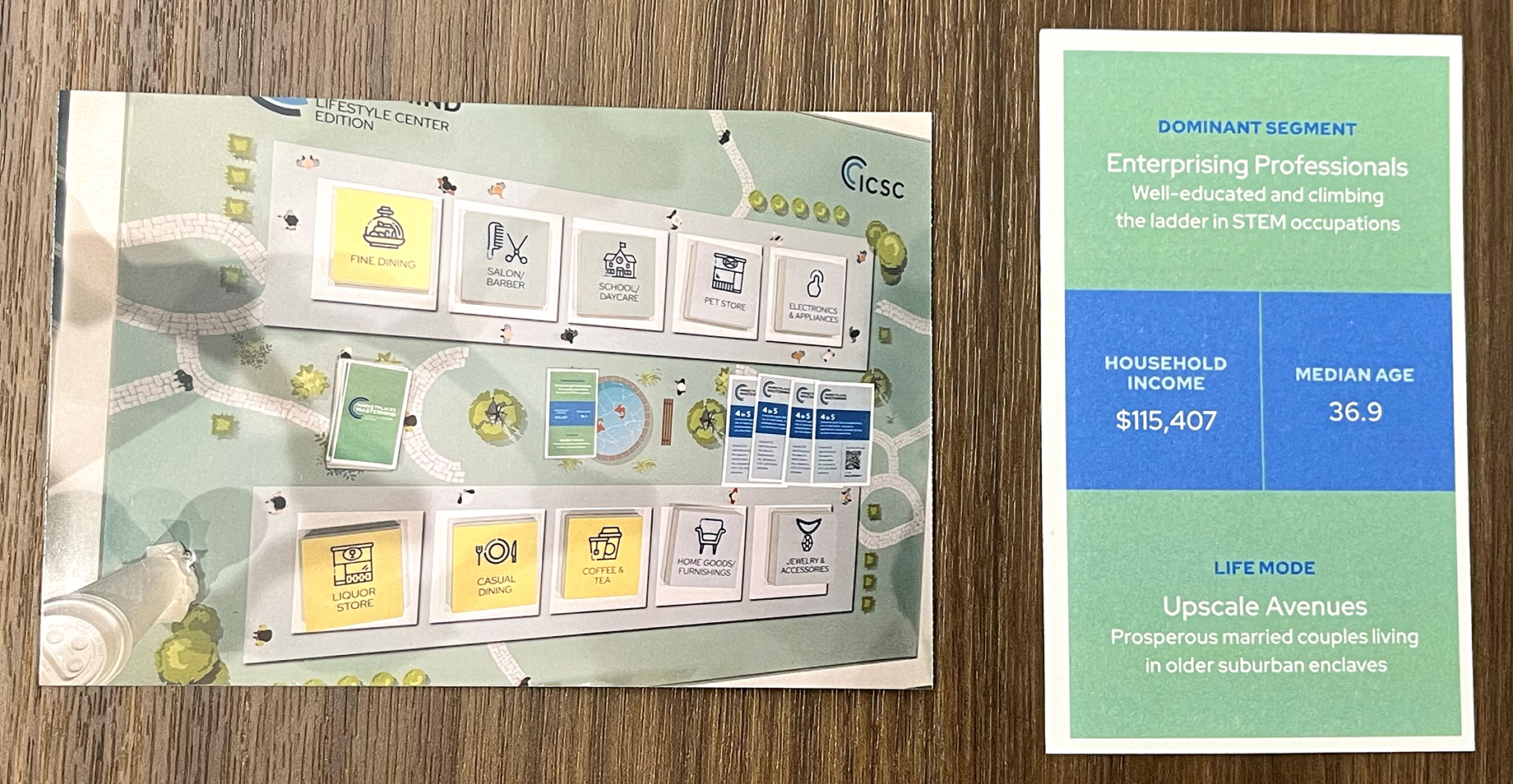
Banks: Banks revealed a generational divide: A Gen X player said a bank was essential for a grocery-anchored center, as pictured below, whereas a Gen Z player commented that no one goes to banks anymore.
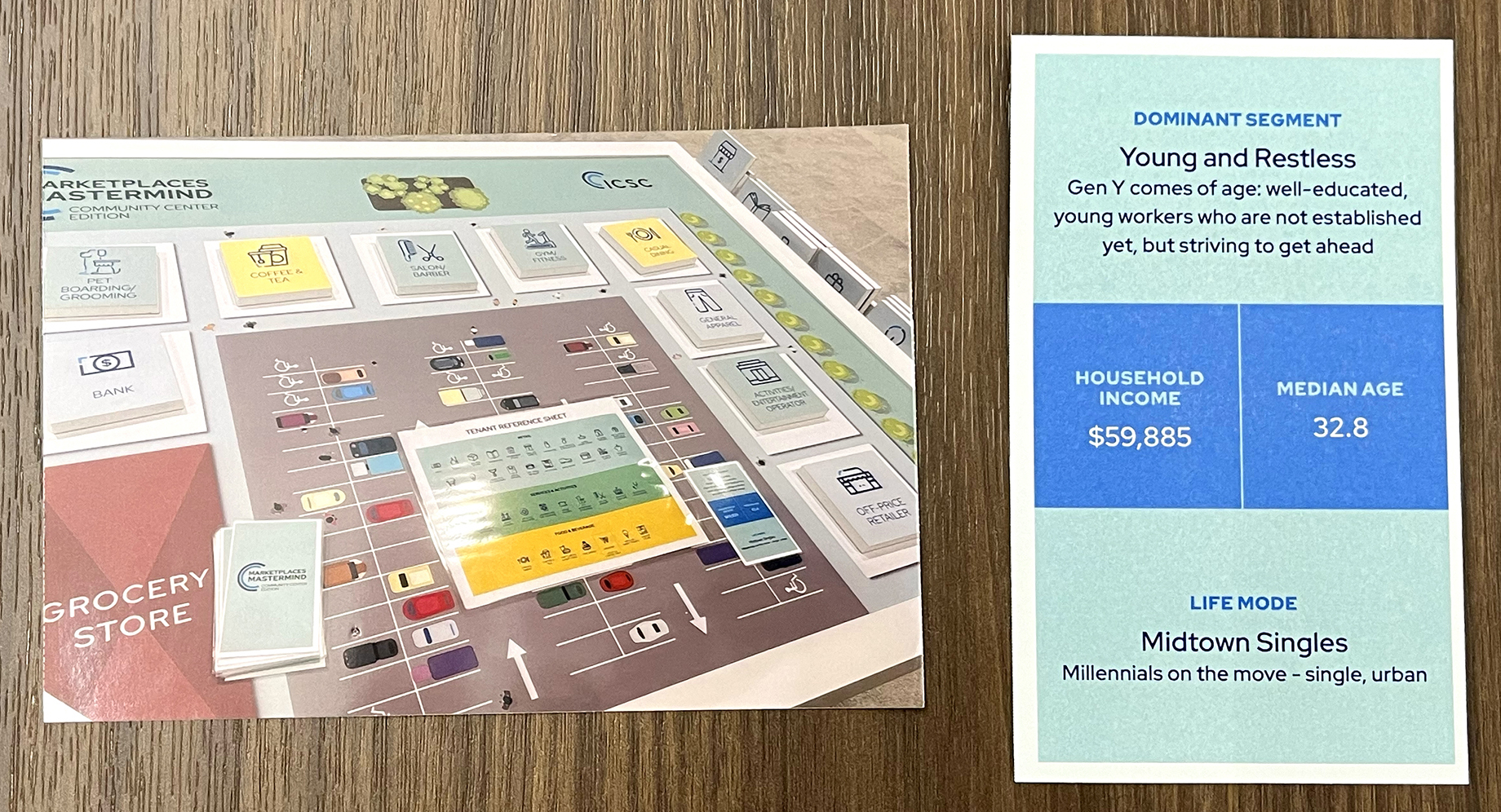
Health Care: Health care was a popular nonretail tenant for grocery-anchored centers like the one pictured below.
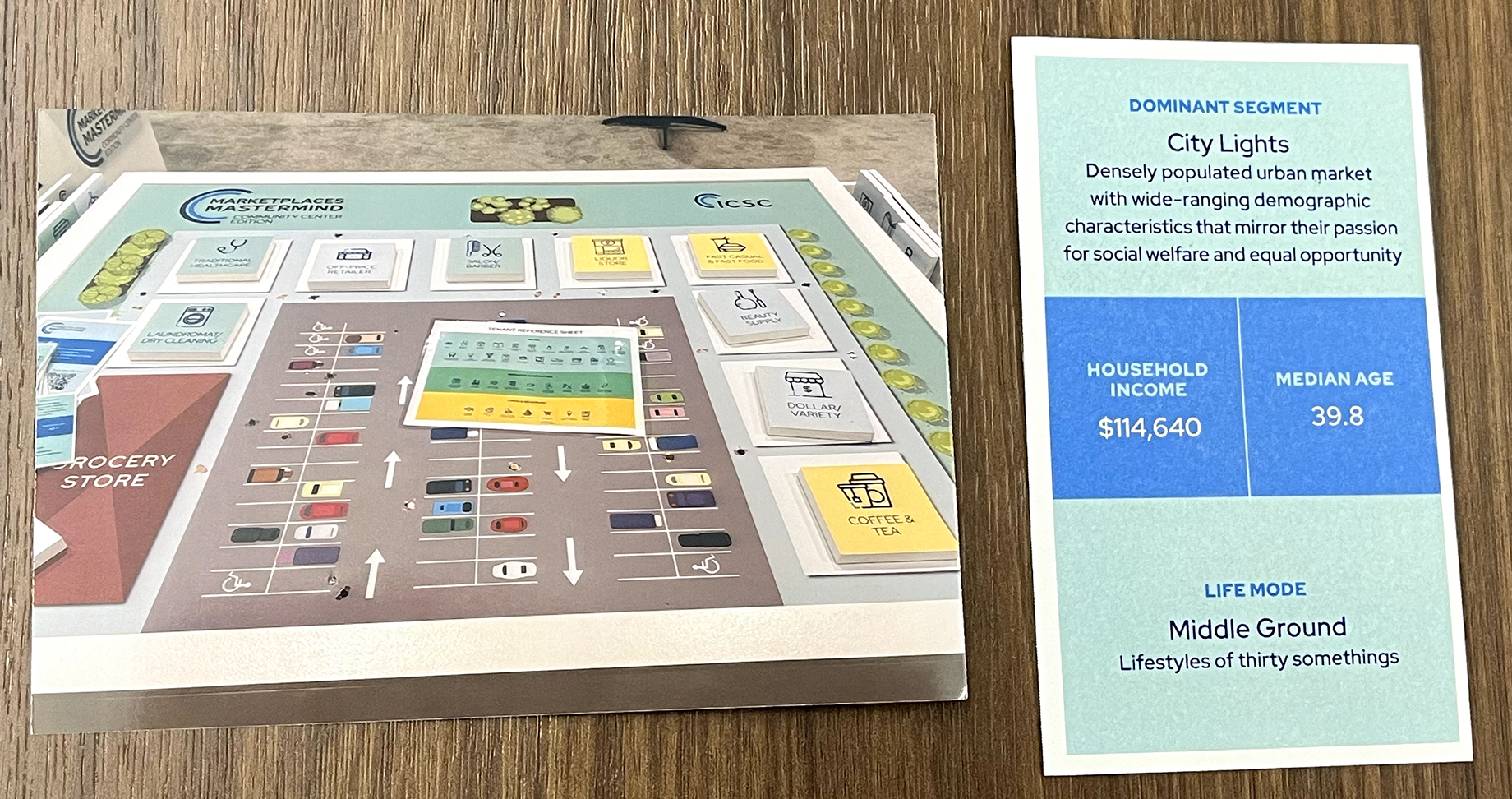
It’s Not Just What Tenants but Where
Placement of tenants within a center is as important as the tenant mix, and no player’s game was complete without at least one last-minute reshuffling of the tenant positions to accommodate late-breaking insights. Discussions arose around sight lines and different users’ signage requirements, and players tended to reserved endcaps with road visibility for grocers, drugstores as below and other tenants that spend big on marketing and want visible signage and sight lines.
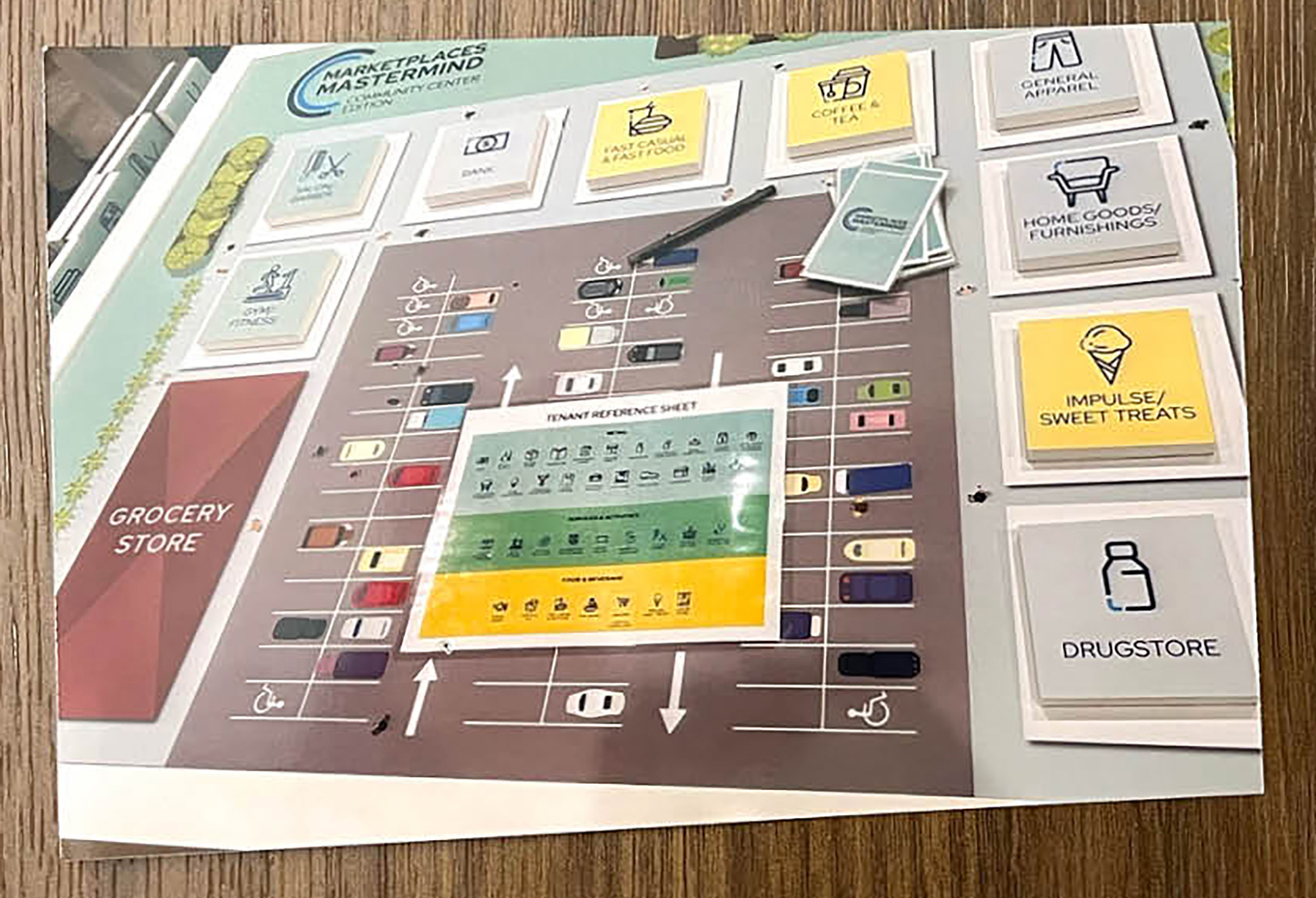
And many players put users that rely less on walk-ins, such as the gym and school below, in the corners of their grocery-anchored centers.
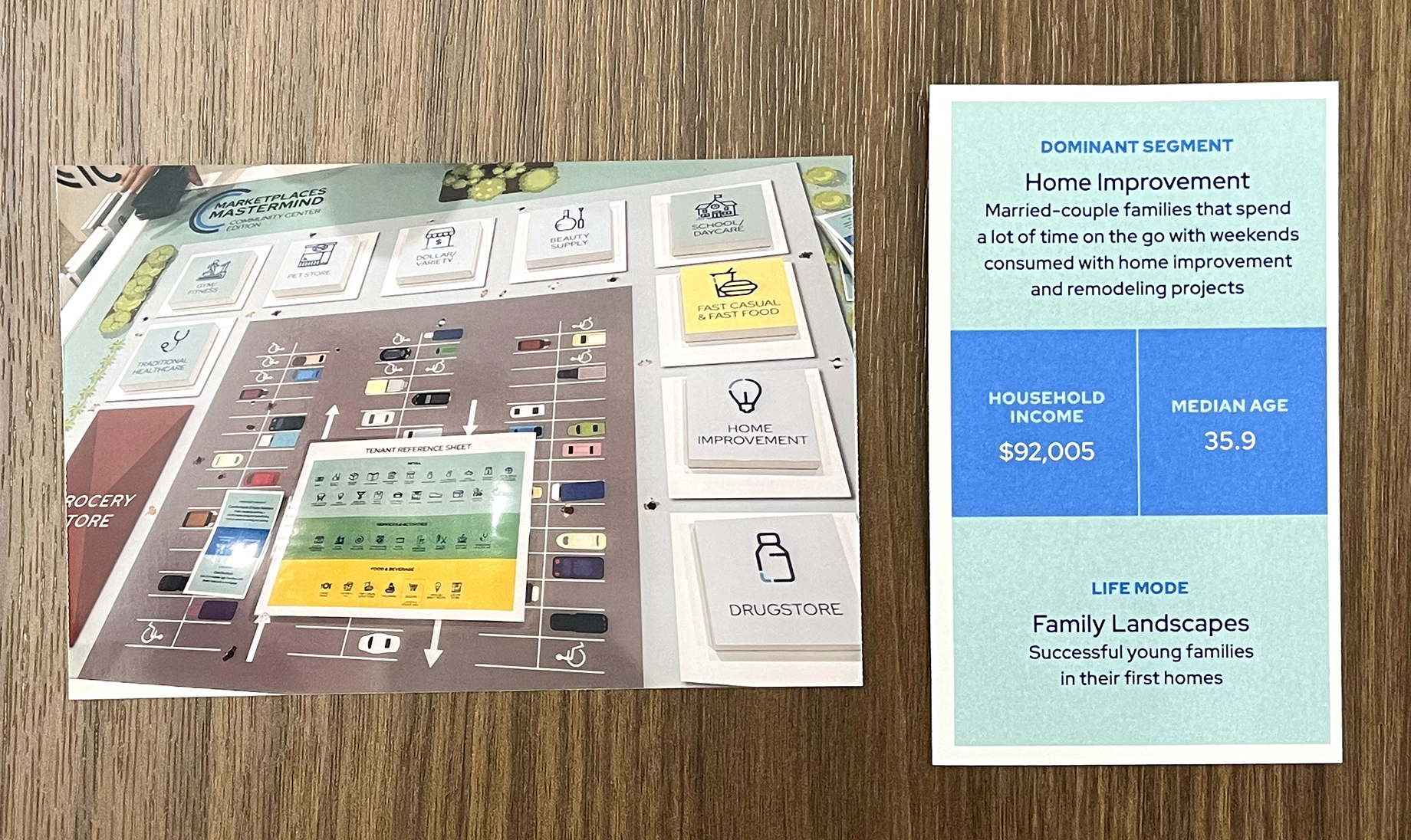
A property manager praised the below plan that lined up F&B users, noting the efficiency for grease traps and ventilation.
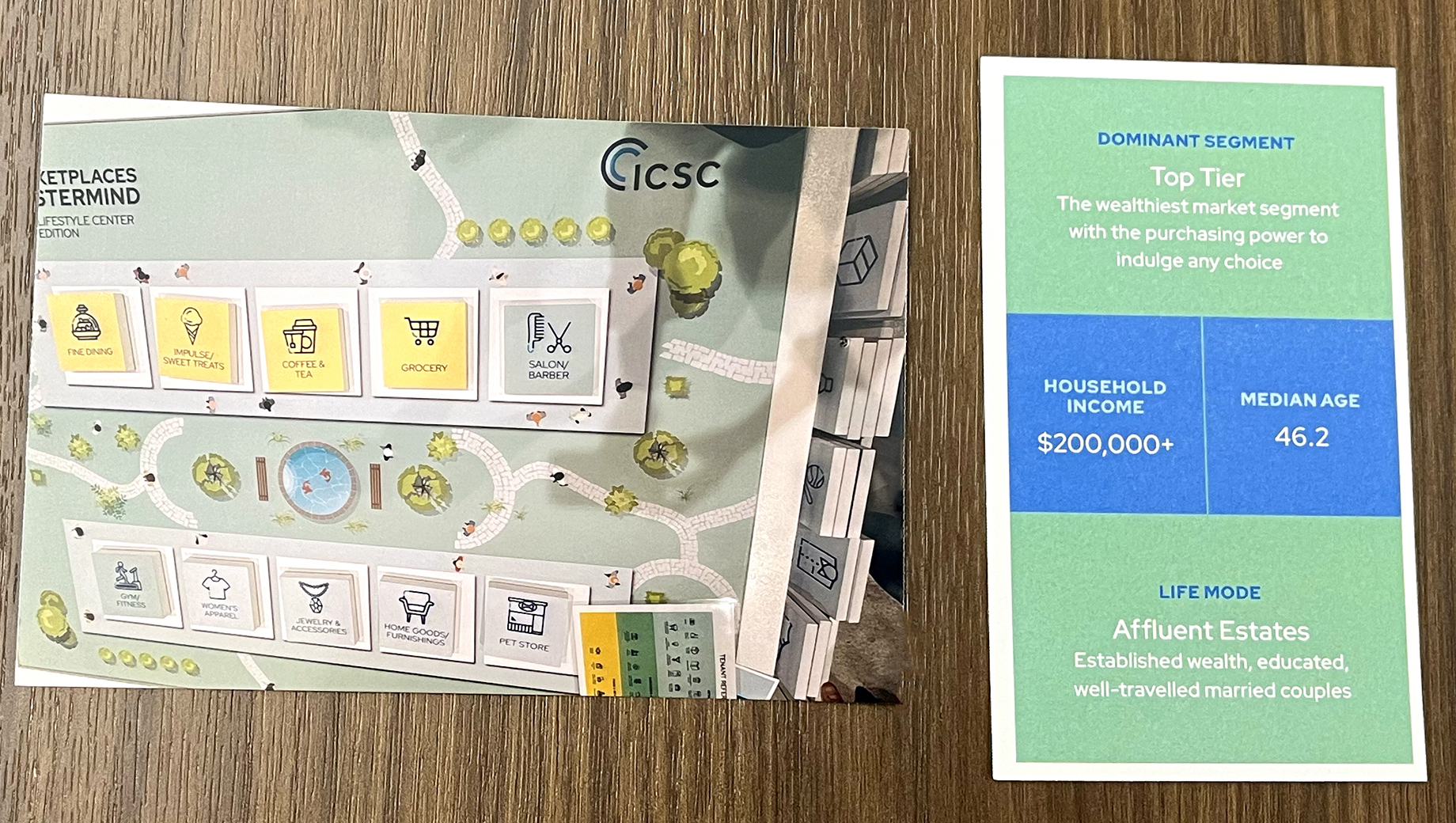
Consumer behavior informed some rearranging, too, as the player below decided to cluster fine dining and jewelry and accessories to encourage date nights.
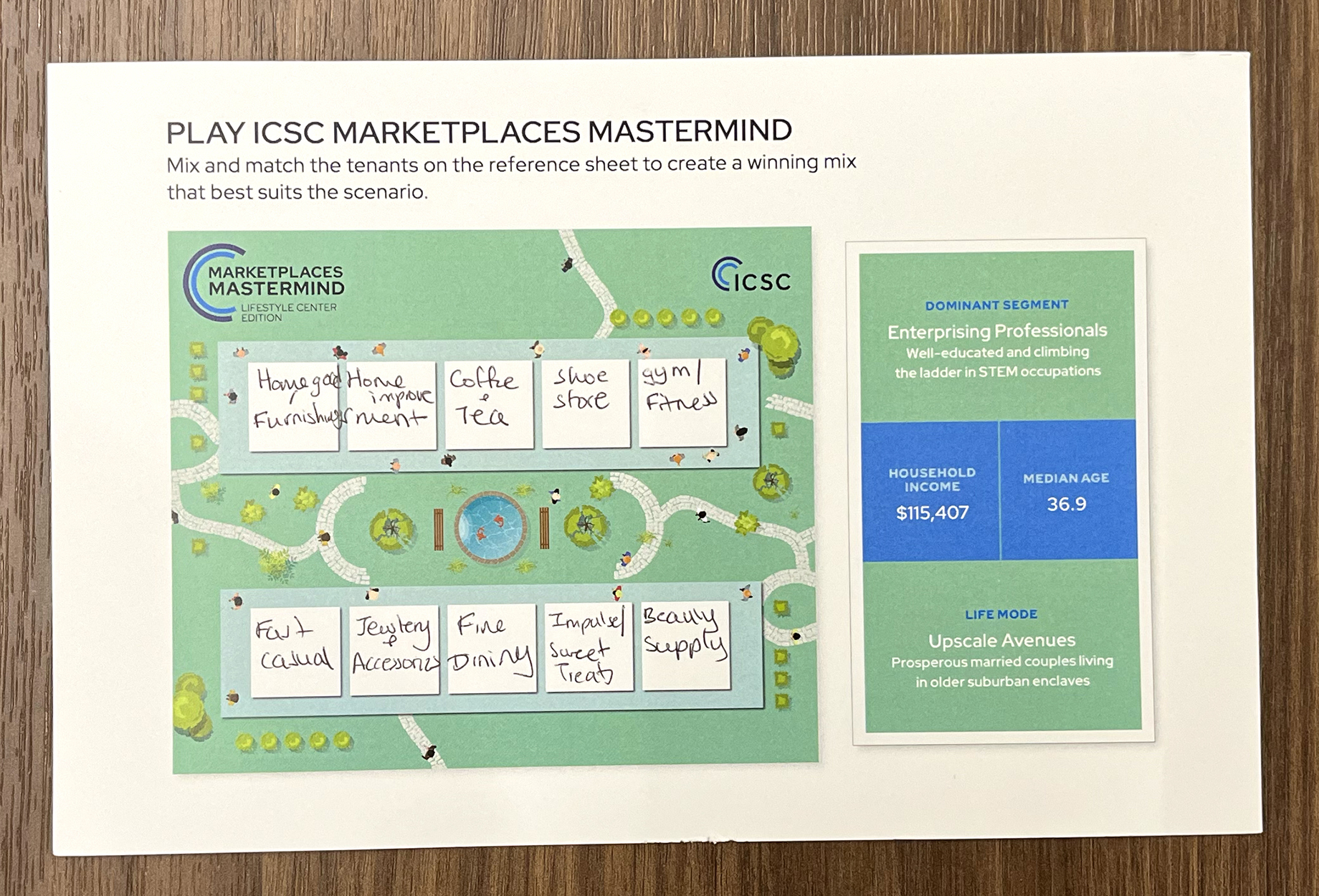
And several players placed gym/fitness and the health/wellness tenants next to each other, as below.
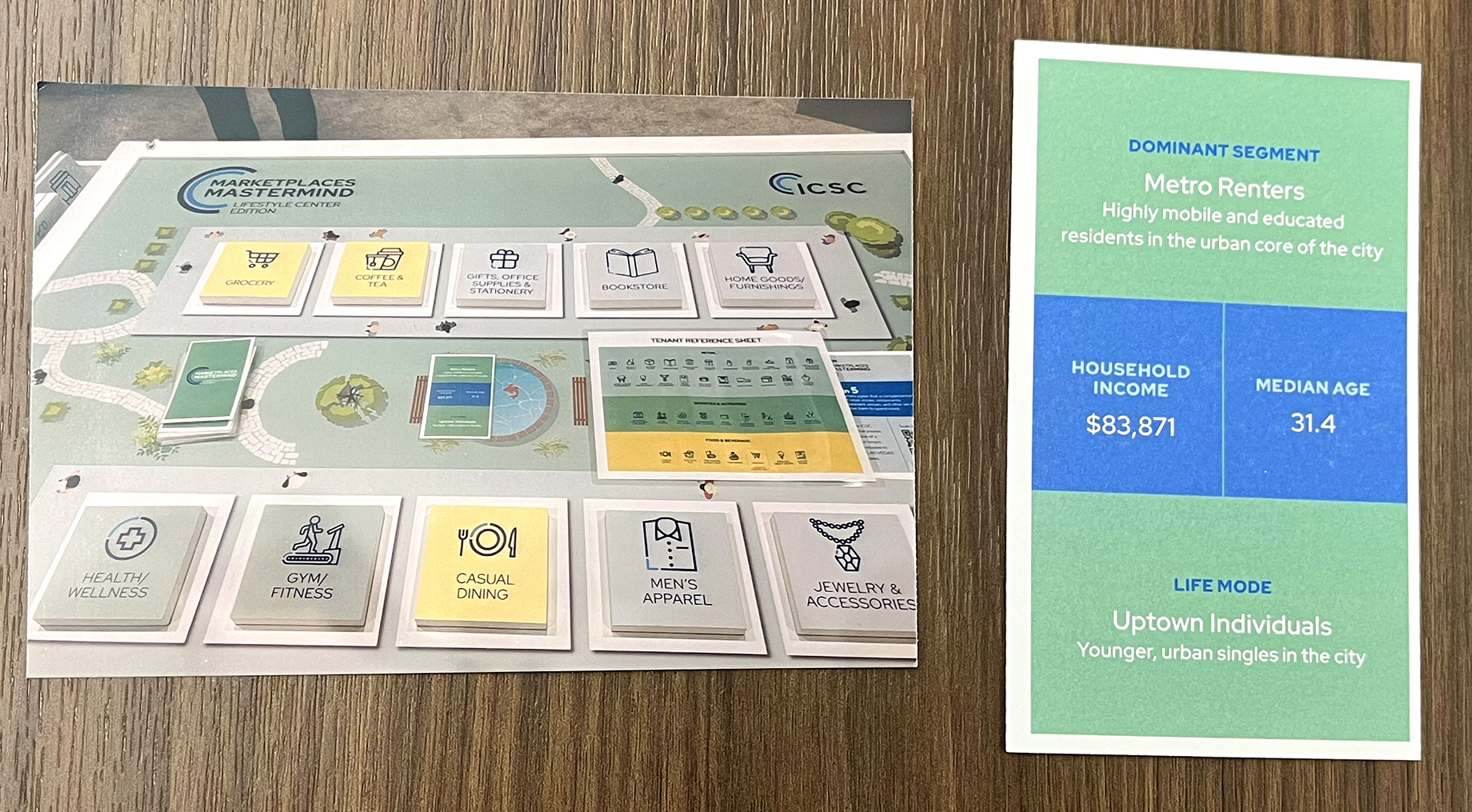
Experiential Addition to ICSC LAS VEGAS
Players enjoyed the game’s experiential nature, which concretely illustrated the abstract principles and concepts of shopping center planning and lease-up. One developer wished for a digital version to play on her phone, and another wanted a set for the office to educate new employees and family members entering the business. And a municipality representative said it would be great for talking with constituents about retail real estate in their communities.
Conceived by C+CT editor-in-chief Amanda Metcalf and executed by ICSC director of public relations Shanna Zhou with the help of outside marketing firm Makeable and fabrication company WhiteClouds, the game took about four months to turn into a physical reality.
ICSC vice president of research and public relations Stephanie Cegielski highlighted the game's impact: “ICSC’s Marketplaces Mastermind game brought retail leasing and tenant curation to life for ICSC LAS VEGAS attendees. Players had the opportunity to take on the role of a shopping center owner or broker and pick stores based on varying demographic information in order to create a winning tenant mix. It was an engaging and educational way for players to learn, exchange and share insights about leasing successful shopping centers.”
By Brannon Boswell
Executive Editor, Commerce + Communities Today